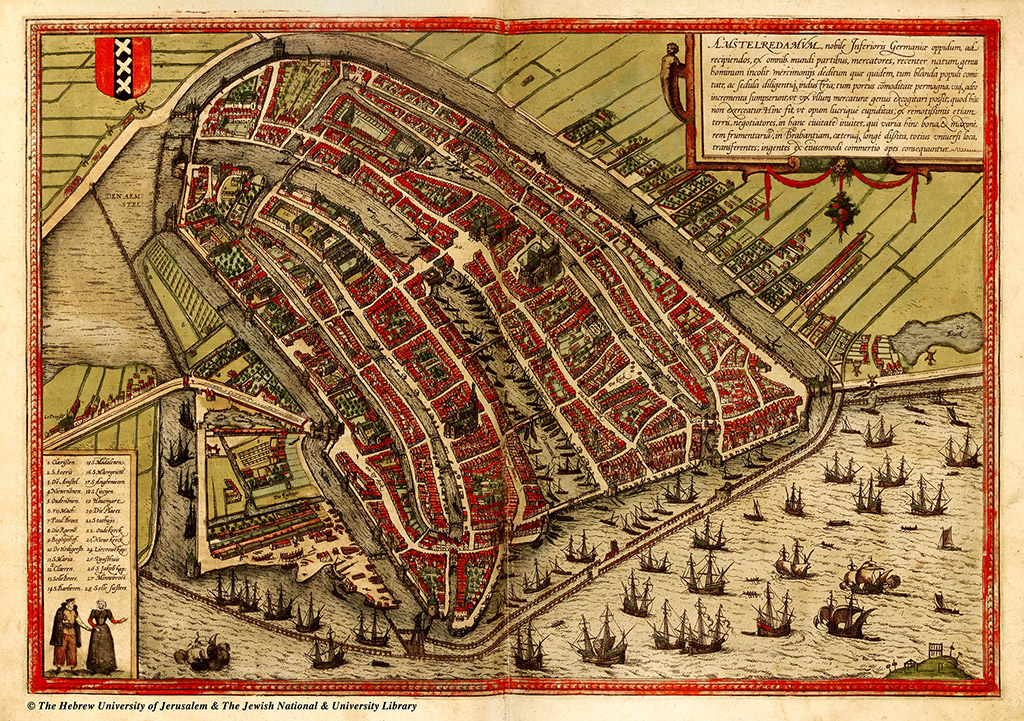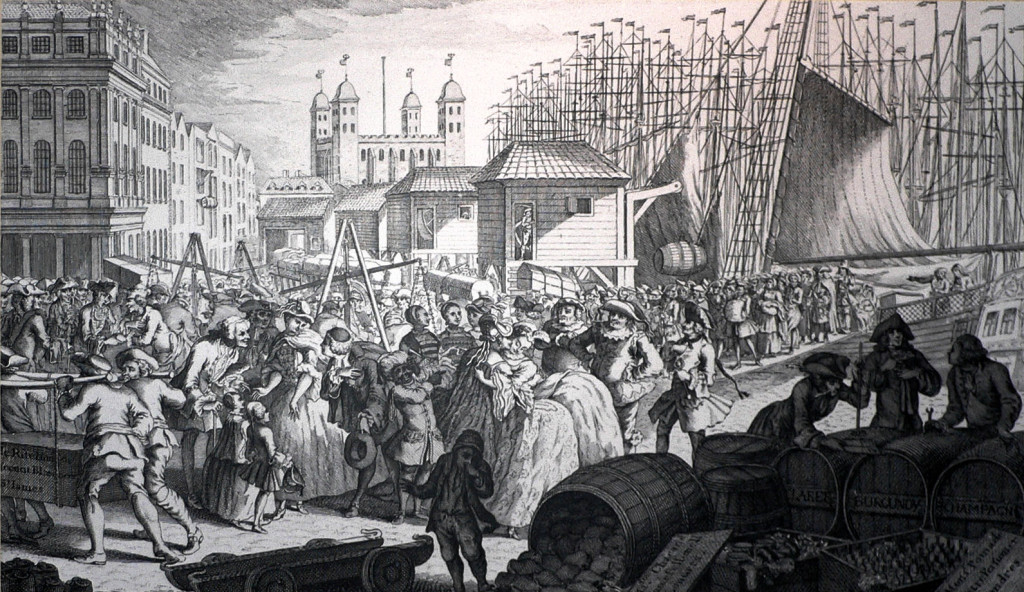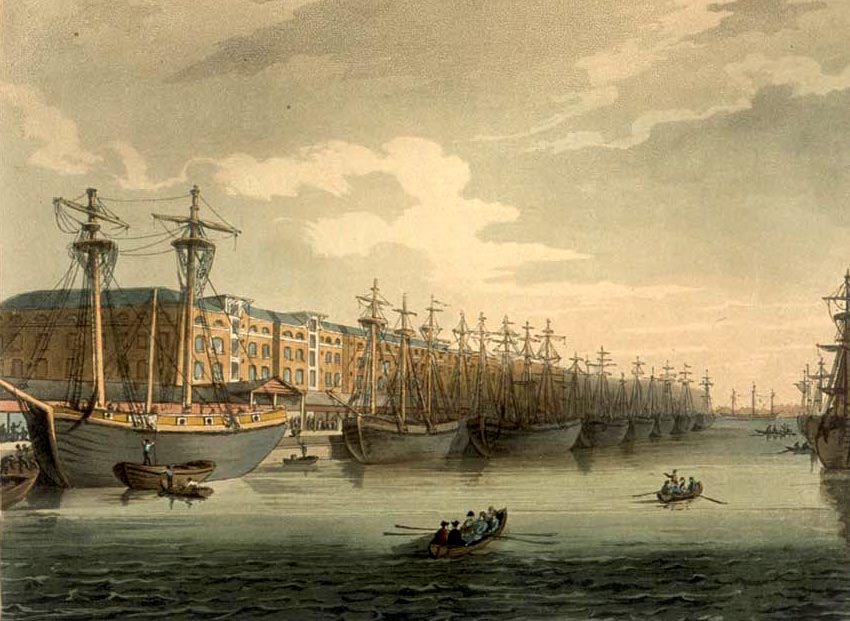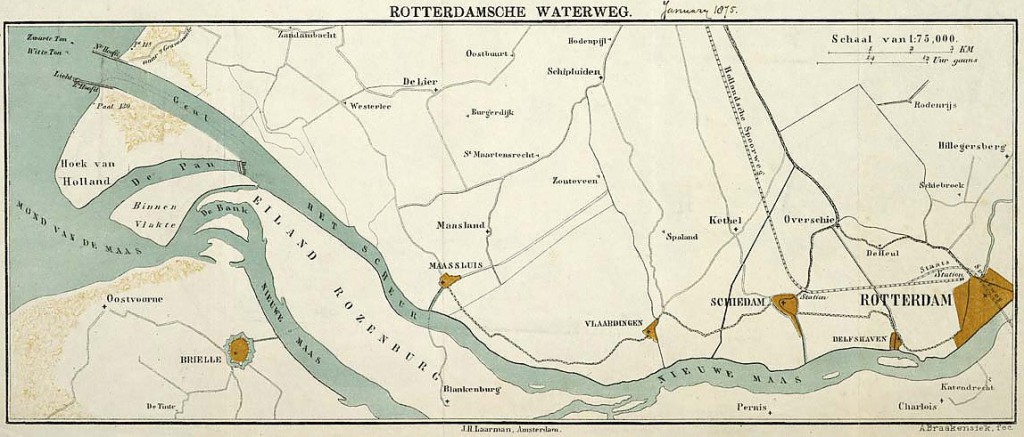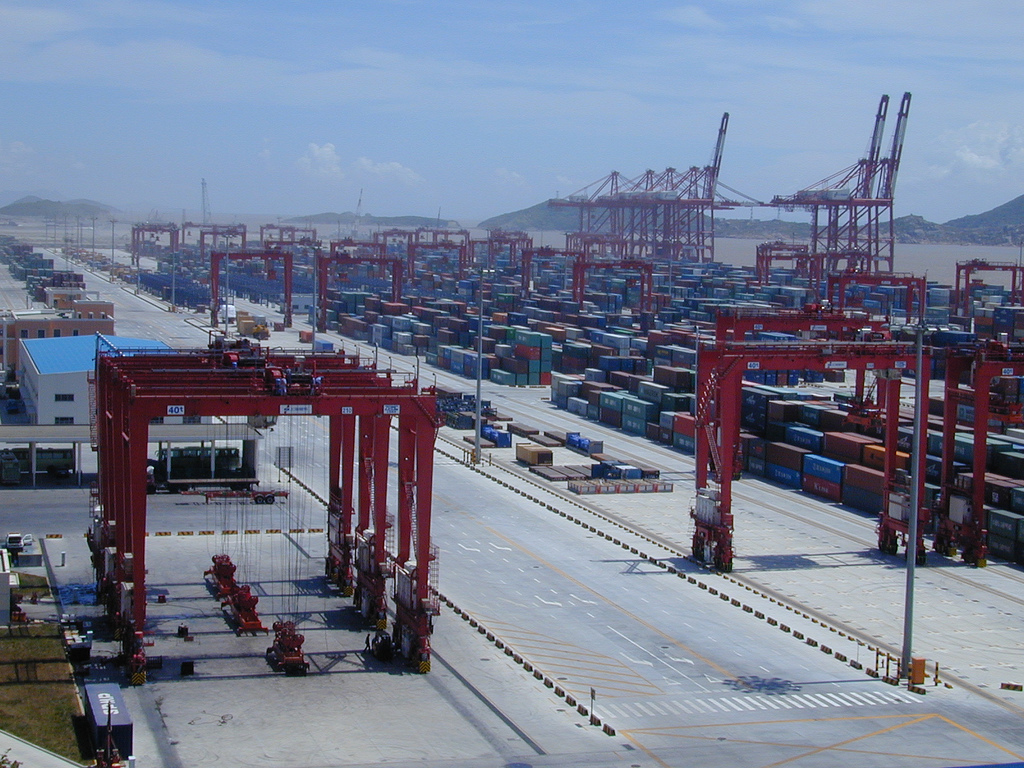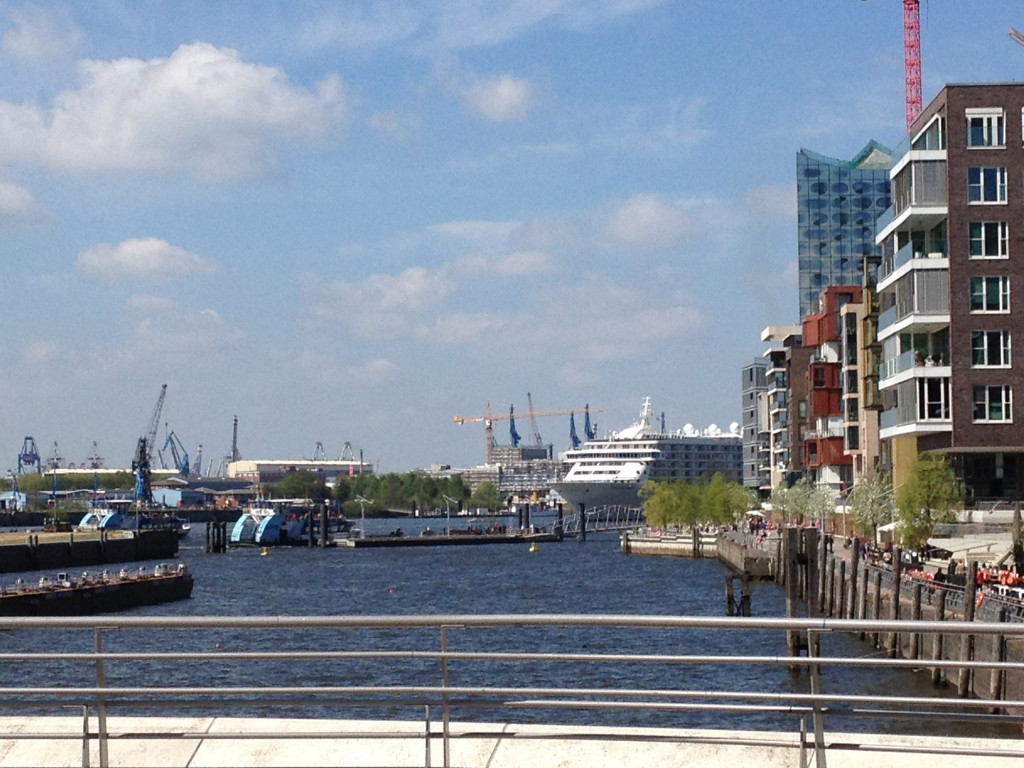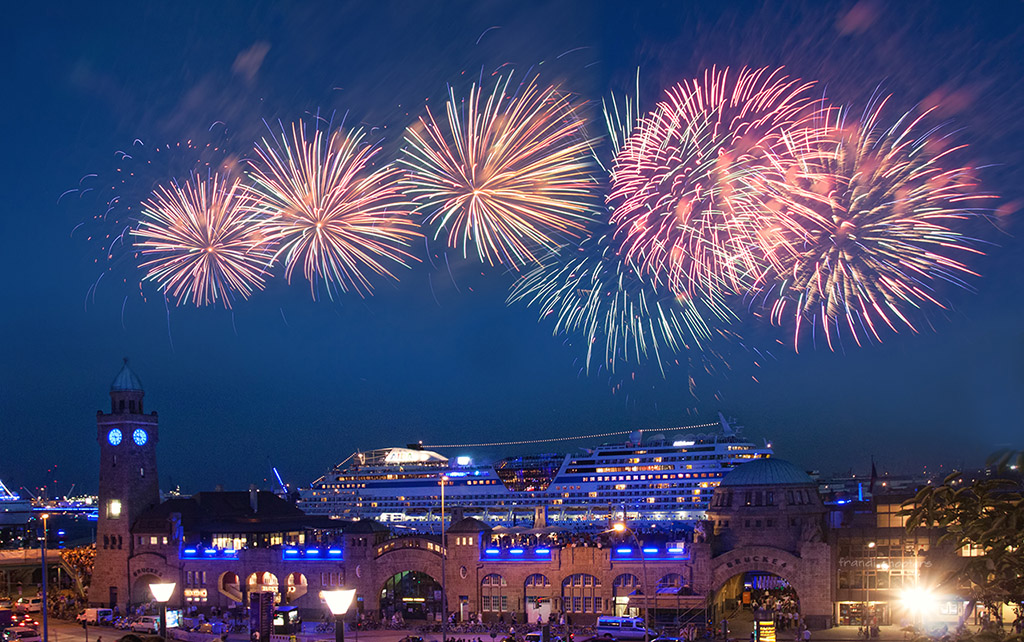On-time delivery, rapid turnaround, commodity flows: maritime logistics is geared to speed and depends on global time frames. Automated terminals such as the APM in Rotterdam work 24/7 for speed and efficiency [1]. Computers plan the precise movements of containers with the help of satellites [2]. All of this activity occurs in a specific locality and requires infrastructure, including port-specific infrastructure and also streets, railways, and buildings. These have their own temporalities; they change slowly and often have been built at different times, for other speeds and purposes and with different preferences. The port shares this urban infrastructure and these spaces with non-port related functions and actors. The physical spaces of cities – the port, waterfront and the city itself – must accommodate a range of different interests and needs as those of the port change. The rhythms of the city in general have attracted the attention of various scholars, but those scholars have not explored the temporalities of the port [3].
A range of factors have historically affected the speed of transport and transshipment, including the time that the ship spends in port, the time it takes to unload, and the proximity of ship, shore, storage, and the hinterland. Over the last five decades in particular, seaport cities have faced huge technological transformations and associated spatial challenges, from the container revolution to the translocation of the working port, from dredging for bigger ships to the transformation of the waterfront, from the logistics revolution to the arrival of cruise ship tourists.
A characterization of the port as the pulse of the city is not surprising [4]. The port-city relationship shifts with the needs of the port; the temporal needs of some actors, such as the port, have a stronger impact on some urban areas than others. The speed with which the city as a whole adapts to port needs, can be crucial to the standing of the port in international rankings and hence influences the economic performance of the city. Some port cities transform the built environment faster than others. Some seem to always make the right decisions and grow; whereas others lose out on keeping a working port or on transforming a waterfront. The port, however, is just one actor in a city, and the question remains how its temporality has intersected with that of the city as a whole.
The Sailing Ship Era
During the era of sailing ships, or until the mid-19th century, the time of travel between ports was difficult to control. The form and size of a ship could influence its speed, but weather, the seasons, and the movements of the tides were all factors as well. Ship owners, charters, traders, and dock-workers did not know the whereabouts of ships and could not easily prepare for their arrival. Shipping crews might spend weeks on shore waiting for ships to be unloaded and reloaded; entire districts catered to these temporary workers.
Speed in shipping included not only the movement of the ships, but also the speed of storing the goods and administrating them. In many medieval European cities, smaller ships brought the goods into the city center to multifunctional buildings that hosted the shippers’ storage, offices, and residences.
Ships brought goods to the center of the cities in medieval cities, such as shown in the example of Amsterdam. (Source: Braun Hogenberg, Civitates Orbis Terrarum I, first Latin edition of volume I published in 1572, c. The Hebrew University of Jerusalem, https://historic-cities.huji.ac.il/netherlands/amsterdam/maps/braun_hogenberg_I_20.html)
As shipping increased in the late 18th century, connecting the colonial empires and their motherlands, and as boats grew, waterways like the Thames, the Delaware, and the Elbe became too crowded. The ships lay several rows deep in the river, and loading and unloading on the riverside wharves became very time consuming.
The Legal Quays on North side of the Thames in 1757, by Louis Peter Boitard. (https://en.wikipedia.org/wiki/Pool_of_London#/media/File:Imports_from_France_Boitard_1757.jpg)
In response, cities and companies built new port facilities. In London, several powerful businessmen, including the chairman of the West India Merchants of London, lobbied Parliament to create wet docks (areas of water enclosed by locks) to increase shore space, allow for direct transshipment into storage, and protect goods from theft with a high wall. In 1799, Parliament authorized the first dock through the West India Dock Act and more docks were subsequently built along the Thames and other rivers.
The West India Docks by Augustus Pugin and Thomas Rowlandson (figures) from Rudolph Ackermann’s Microcosm of London, or, London in Miniature (1808-11).
Industrialization
The introduction of steam ships made travel times easier to calculate; the telegraph made possible the rapid exchange of information, and was deployed across the US by the mid-19th century.
Meanwhile, not all cities imitated the dock model. Hamburg’s elite objected to the dock as an obstacle to free traffic, and opted for a tidal harbor instead, where ships could anchor at embankments, such as the Sandtorquay from 1866. Next to this harbor, the city built a warehouse district, the Speicherstadt, opened in 1888, to speed up shipping and unloading and storing (It privileged the times of the port over the rhythms of everyday life, its construction displacing almost 24000 inhabitants, both rich and poor). Built with the newest technology – electrical lighting and hydraulically powered winches – it improved and sped up the chain of shipping, storing, and connection to the hinterland. Improving travel times was closely related to the availability of transport.
A section through the Speicherstadt development of 1888 shows the close connections between ships, road and rail, and storage. (Aus dem Hamburger Freihafengebiet, Hamburg 1888, Strumper & Co)
The construction of infrastructure connecting the port to the hinterland is a key factor in the development of a port. The construction of the Nieuwe Waterweg in 1872 from Rotterdam to the sea was essential in promoting the growth of Rotterdam. Similarly, the construction of new global waterways shaped port development. New canals connected oceans, such as the Suez Canal in 1869 and the Panama canal in 1914, thus reshaping global geographies, shortening global traveling and transport times, giving rise to new cities, and introducing new players in the temporalities of shipping.
Distribución Het Nieuwe Waterweg, a canal built from the part of the river called the Scheur to the North Sea to facilitate access. (Source: Kaart van de waterweg tussen de Noordzee en Rotterdam, 1875, Stadsarchief Rotterdam, Collectie Kaarten- en plattegronden (toegang 1982) nr. 954)
Developing the connections between the port and its hinterland was also important for the temporality of the port in this period. These connections took multiple forms, but all were written into fixed infrastructure (in contrast to the flexible waterways of the sea): canal, road, or rail. The development of the port of Rotterdam, for example, relied heavily on the speed of rail and water connections with the heavily industrialized German Ruhr area.
Following the construction of mono-functional docks throughout the 19th century, administration and housing also separated. Administrative districts showcased companies’ success: the Kontorhaus district in Hamburg, located next to the warehouse district and the Elbe River includes buildings acknowledged world-wide, such as the Chilehaus commissioned by the shipping magnate Henry B. Sloman and finished in 1924. This new district replaced former working class housing. Workers traditionally lived close to their jobs, often renting beds in working class districts as they had to walk to their jobs. Given the need for the workers to access the port, Hamburg built new housing districts, including Barmbek in the 1920s/30s, accessible with a subway.
The iconic Chilehaus, centre piece of Hamburg’s office district. (https://en.wikipedia.org/wiki/Chilehaus#/media/File:Chilehaus_Point.jpg)
Containerization
For many centuries, shipping relied heavily on human labor and depended on the natural rhythms of day and night. Men carried bulk goods between ships and wagons, but the workers were often only called in when ships arrived, as weather and seasons permitted, and some worked as day workers [5]. Shipping traffic sped up dramatically with the invention of the container in the 1960s, with a similarly dramatic effect on port cities. The transformation of vessels had shaped shipping at various moments – the use of bulk tankers instead of barrels for oil is just one example – but nothing rivaled the scale of the changes wrought by containerization. Indeed, in the effects of containerization we can see just how much ports had shaped the time and space patterns of port cities. Bigger ships could carry more containers, but required deeper harbors, so companies and governments came together to build new ports away from cities. At the same time, containerization threw most port workers out of jobs: machines could load and unload standardized containers without opening them, and transfer them between ships and rail or road. So ships and workers left the old port areas, which stilled. The few remaining port workers had to work shifts on a 24-hour schedule; the new port had conquered the night.
The speed of transshipment in working ports is an important effect of the new technologies. Containers have greatly improved turnaround times and the recent prominence of Chinese ports on port city rankings is closely related to time, as César Ducruet has demonstrated, in 2011, China had a quick turnaround of 0.96 days compared with 5.8 days in both 2006 and 1996 [6]. The availability of hinterland connections, of water connections, road and rail lines that are not cluttered by local transport of people and goods is just as important as the speed of transshipment. In Europe, much if not most inland transportation is via rail or road (in contrast to Asia); the Rotterdam train connection to Duisburg illustrates the importance of inland rail transport [7].
The automated Yangshan deep-water container port at Shanghai. (https://commons.wikimedia.org/wiki/File:Port_of_Shanghai,_Yangshan_Deepwater_Harbour_Zone,_02.jpg#/media/)
Waterfronts Local and for Cruise Ships
While the new ports bustled with activity, cities sought to reclaim abandoned waterfronts for new temporalities, as spaces for everyday rhythms of work, housing, and especially leisure. Recently, the cruise business has grown rapidly, adding another facet to the overall rankings of ports. Space and time matter as much to cruise ships carrying passengers as they did to earlier ships transporting commodities. Their ports must have access to sea and land, and in particular easy access to tourist sites. Cruise ship tourists only have a few hours, at most a day, in a single place (unless it is the starting or ending point) and prefer to be able to step off the ship and experience a city – and Hamburg built HafenCity accordingly. But tourists go, while locals stay. These differing temporalities are a challenge for planners. Generally, the times of the port are disconnected from those of city residents, coinciding only in special events like festivals or harbor birthdays.
Cruise ship passing the HafenCity Hamburg. (© Carola Hein)
Cruise ship and fire works of the old Elbtunnel at the Cruise Days in Hamburg 2012. (©frandi-shooters 2012, https://flic.kr/p/cUJgtA)
Temporalities of the logistics chain
Time continues to play an important role in port design and functioning. Turnaround time is one of the important factors in port assessment and it is intimately linked to the number of ships that can be served in a port. Avoiding waiting times and streamlining ship handling is a key issue for leading ports [8]. The speed of transshipment is an important factor, but just as important is the availability of hinterland connections, access to administration and decision-making, and the proximity of consumer centers and cities. Information is available instantly and even for bystanders through tracking sites online.
Conclusion
One by one, different time elements of the logistics chain bearing goods from the original factory to the consumer have changed in ports and port city flows – ship to shore movements, terminal operations, other port functions, and urban infrastructure. Natural cycles and human times have largely been lost. The port creates an on-time urbanism, with different times relevant to the translation of needs into spaces. Ports are time pioneers. They are often the first to transform maritime times and those of the city as they prioritize, distribute, and organize their businesses.
Port, waterfront, and city exist in different time regimes and are in a constant dialogue (or struggle) over spaces in and around the port. Time is a major site of competition: the relation between economic time and citizen time is explicitly shaping built form. Shipping elites have imposed their times on those parts of the cities that host them, while the times of shippers, workers, tourists, and citizens all exist next to each other and shape the city in different (not always democratic) ways and creating intersections between specialized and ordinary lives. Diverse political and economic structures are necessary to facilitate the adaption of urban areas and places to the need of the port, even to select the areas in the port, city and metropolitan area that need to adapt. The rapid adaptation of port activities to new needs has a spatial dimension that transforms parts of the city at different speeds.
Temporal justice, to build on Dietrich Henkel’s concept and the work of Michael Young, is making sure that the needs of the port and the needs of the people are respected [9]. Seaport cities have an astounding capacity to rapidly adapt, to bounce back from disasters and challenges in history. This capacity appears to be, at least partly, anchored in a shared seaport culture that supports maritime business and that is constructed over time to include large parts of the population. Even as ports disconnect from traditional cities, they still need the support of the larger metropolitan area and its citizens. Common respect of temporalities is a key to a healthy and just development.
Notes
[1] APM Terminals, “APM Terminals Maasvlakte II Begins Landside 24/7 Operations,” November 26 2014.
https://www.apmterminals.com/news/press-releases/2014/11/maasvlakte-begines-operations (accessed March 15, 2015)
[2] Im Hafen arbeiten die Container-Könige der Nacht, 28.10. 2000, Die Welt.
https://www.welt.de/print-welt/article541094/im-hafen-arbeiten-die-container-koenige-der-nacht.html (accessed March 15, 2015)
[3] Dietrich Henkel and Susanne Thomaier, “Efficiency, Temporal Justice and the Rhythm of Cities,” in Space–Time Design of the Public City, ed. Dietrich Henckel, et al. (Dordrecht: Springer, 2013); Henri Lefebvre, Rhythmanalysis. Space, Time and Everyday Life (New York: Continuum, 2004); “Saskia Saaen, Spatialities and Temporalities of the Global, Public Culture 12, 1 (2000), Embedding the Global in the National: Implications for the Role of the State, States and Soverignity in the Global Economy, Ed. David A. Smith, Dorothy J. Solinger, and Steven C. Topic, London Routledge 1999, Neil Brenner, Global, Fragmented, Hierarchical: Henri Lefebvre’s Geographies of Globalization, Public Culture 10, 1 (1997), 135-167.”; Rhythmanalysis. Space, Time and Everyday Life.
[4] “Hafen bleibt Pulsgeber für Hamburg”.
https://www.ndr.de/nachrichten/hamburg/hafen/verstehen/Hafen-bleibt-Pulsgeber-fuer-Hamburg-,straubhaar109.html
[5] For example: Karl Heinrich Altstaedt, Schauerlüd, Schutenschupser Und Kaitorten: Arbeiter Im Hamburger Hafen (Erfurt: Sutton, 2011).
[6] César Ducruet and Olaf Merk, “Examining Container Vessel Turnaround Times across the World,” Port Technology International 59.
[7] Port of Rotterdam, Direct train Euromax DeCeTe Duisburg, 3.13.2014. https://www.portofrotterdam.com/en/News/pressreleases-news/Pages/direct-train-euromax-decete-duisburg.aspx (accessed 14 March 2015).
[8] Port of Rotterdam, Focus on Vessels in the Port of Rotterdam
https://www.portofrotterdam.com/en/shipping/documents/het-schip-centraal-eng-juli13.pdf (accessed 14. March 2015).
[9] Henkel and Thomaier, “Efficiency, Temporal Justice and the Rhythm of Cities.”
